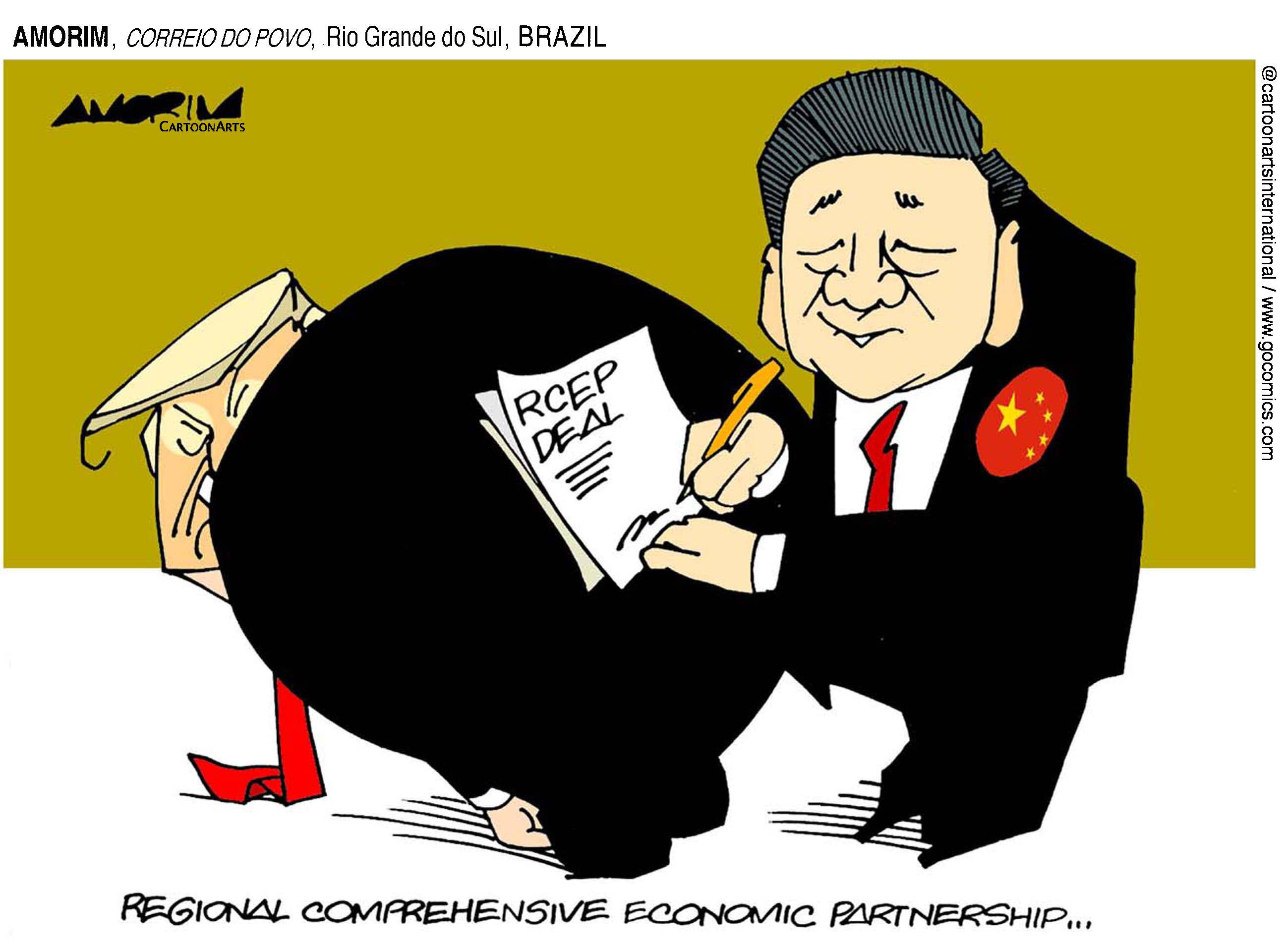Last month, 15 Asia-Pacific countries signed the Regional Comprehensive Economic Partnership. The occasion marked what might be the most significant economic achievement since the COVID-19 crisis began. And yet the RCEP — or, indeed, Asia — cannot save the ailing multilateral trading system alone.
To be sure, the RCEP is a firm repudiation of the protectionism that has been gaining ground in recent years. Economic integration is very difficult in the Asia-Pacific, owing to widely varying levels of development, diverse cultures and institutional structures, and ongoing territorial disputes. But, confronted with the COVID-19 downturn, the parties were eager to conclude the pact, after eight years of negotiations.
And this is no minor trade bloc. Signatories include China and Japan — the world’s second- and third-largest national economies, respectively — as well as South Korea, Australia, New Zealand, and ten Southeast Asian countries. The RCEP thus accounts for 30% of global GDP, making it the world’s largest free-trade area.

















With your current subscription plan you can comment on stories. However, before writing your first comment, please create a display name in the Profile section of your subscriber account page.